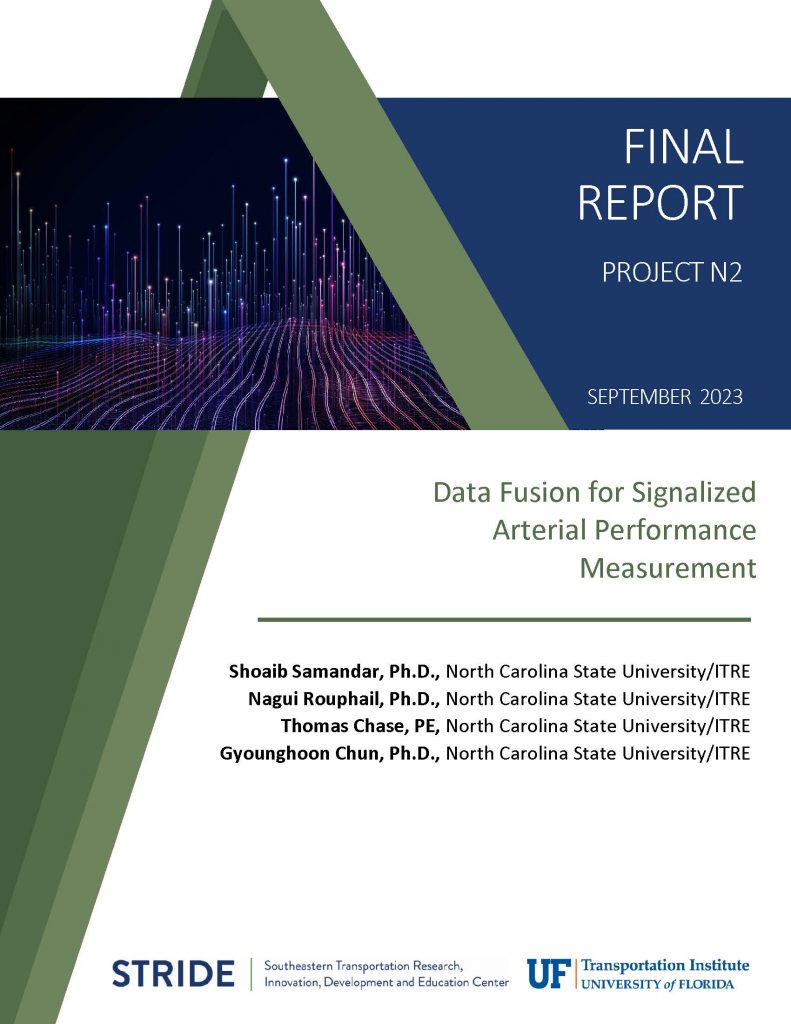Data Fusion for Signalized Arterial Performance Measurement
Research Team
Shoaib Samandar, Ph.D., North Carolina State University/ITRE
Nagui Rouphail, Ph.D., North Carolina State University/ITRE
Thomas Chase, PE, North Carolina State University/ITRE
Gyounghoon Chun, Ph.D., North Carolina State University/ITRE
UTC Project Info
Final Report
Final Technology Transfer Report
Project Description
According to the Federal Highway Administration, there are more than 330,000 traffic signals in the US (EDC-4 ATSPM Report). Over 75% of these signals could be improved by updating their equipment or timing plans (FHWA-HRT-05-002). Poor traffic signal timing accounts for nearly 300 million vehicle-hours of delay on major roadways alone (TTI Urban Mobility Report). Traditional maintenance and operations methods rely on local knowledge, driver feedback/complaints, and long-range planning with more recent applications incorporating performance-based management. However, as agencies access more and more data sources for performance measurement, there is difficulty in ensuring each source is appropriately utilized. Agencies must consider cost, availability, accuracy and accessibility of data sources and often are not fully informed of most factors aside from a cost estimate when deciding which data to use. This project will review these data sources including ATSPM, connected and instrumented vehicles, commercial probe data and Bluetooth/WiFi data and develop a framework in which combined performance measures can be created through data fusion. These measures will be validated using simulation and NGSIM datasets and summarized for use by local and state agencies with various data sources available.
Products
Data Fusion Framework for Arterial Performance Measures – The report Improving ATSPM’s Approach Delay Calculation was submitted to the TRB Traffic Signal Systems Committee (TSSC) for review in their Big Data Challenge Competition. The report documents multiple options for improved approach delay performance measures for arterials using data fusion of point sensor data and traffic signal state data. This report identified significant underestimation of delay under current ATSPM methodology and showed improvements for each candidate method depending on the detection layout of the intersection.
Methods for improved Arterial Performance Measures – The paper Alternative Methods for Improving ATSPM’s Approach Delay Calculation documents the methodology for new methods of approach delay calculation, applied the methodologies to a case study in Utah, and documented the effectiveness of the new methods. Agencies using ATSPM may see significantly improved performance measurement by utilizing the methodology applicable to the detector configurations in their signalized intersections.
